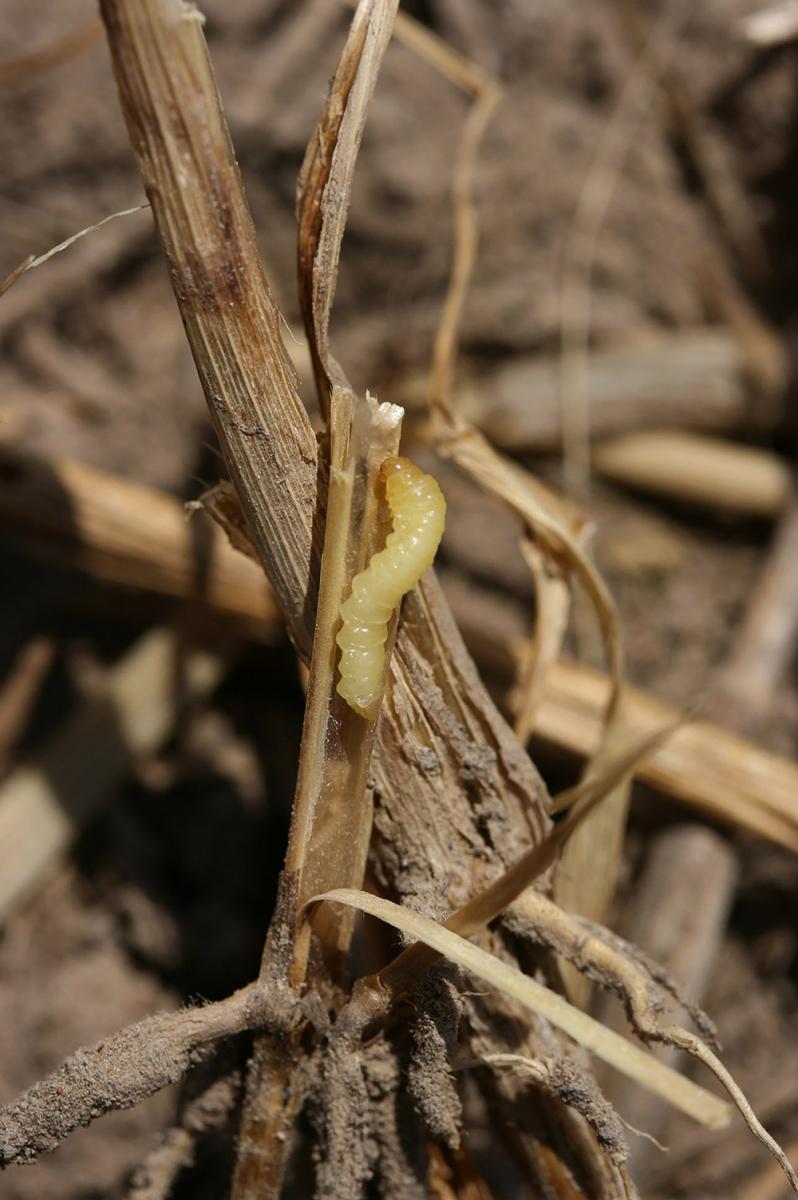Wheat Stem Sawfly Infestations Continue to Impact Western Nebraska

Sept. 18, 2015
Significant amounts of wheat lodging due to wheat stem sawfly infestation were reported from dryland wheat producers in Box Butte County and elsewhere in the Panhandle this harvest season. The level of infestation or wheat lodging may not have been quite as severe as in 2013 and 2014, but sawfly remains a serious pest in western Nebraska. Yield losses in seriously lodged fields can range from 30% to 50%. Lodging is heaviest on field borders, sometimes 100% (Figure 1), but lodged wheat tillers can be found all the way across large fields of wheat.
Prior to 2013 the serious border lodging may have been 20 or 30 feet, but in the last couple years growers have reported severe lodging up to 100 feet on field margins. From a survey of 16 Box Butte County fields, six fields were severely infested with heavy border lodging and infestation across the entire field (Figure 2). The remaining 10 fields had light to moderate infestations. Sawfly infestation was noted in all dryland wheat fields. The most severe lodging and infestation appears to be adjacent to undisturbed stubble from 2014. Wheat fields adjacent to residues other than wheat stubble or wheat adjacent to stubble that had been tilled had lesser degrees of infestation.
Wheat stem sawfly infesting winter wheat was first noted in Nebraska in the early to mid 1990s. The first infestations were noted in Banner County near the Wyoming border. It has continued to increase ever since and now is becoming a very significant pest. The use of multiple tactics, a key aspect of integrated pest management, will be needed to manage the sawfly problem. Crop rotation, resistant varieties with solid stem characteristics, tillage, greater field width, and trap crops are some of the tools and strategies that can be used to combat this problem.
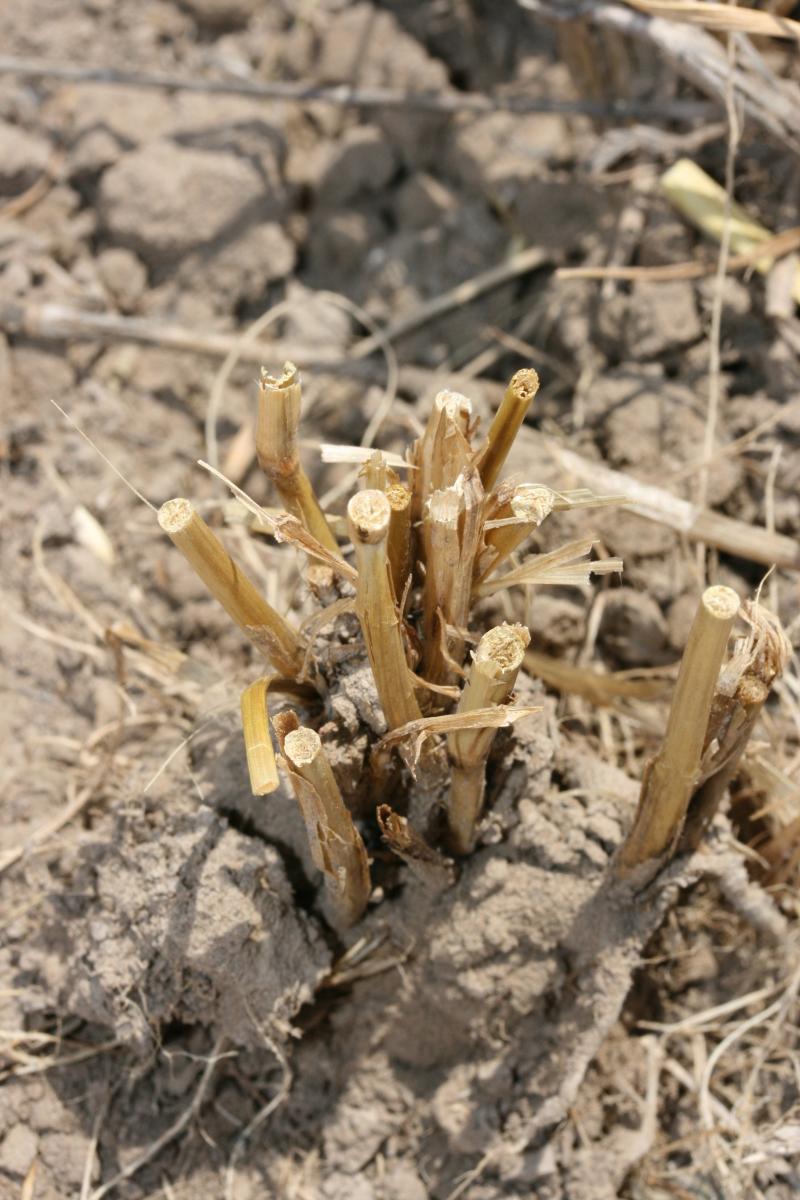
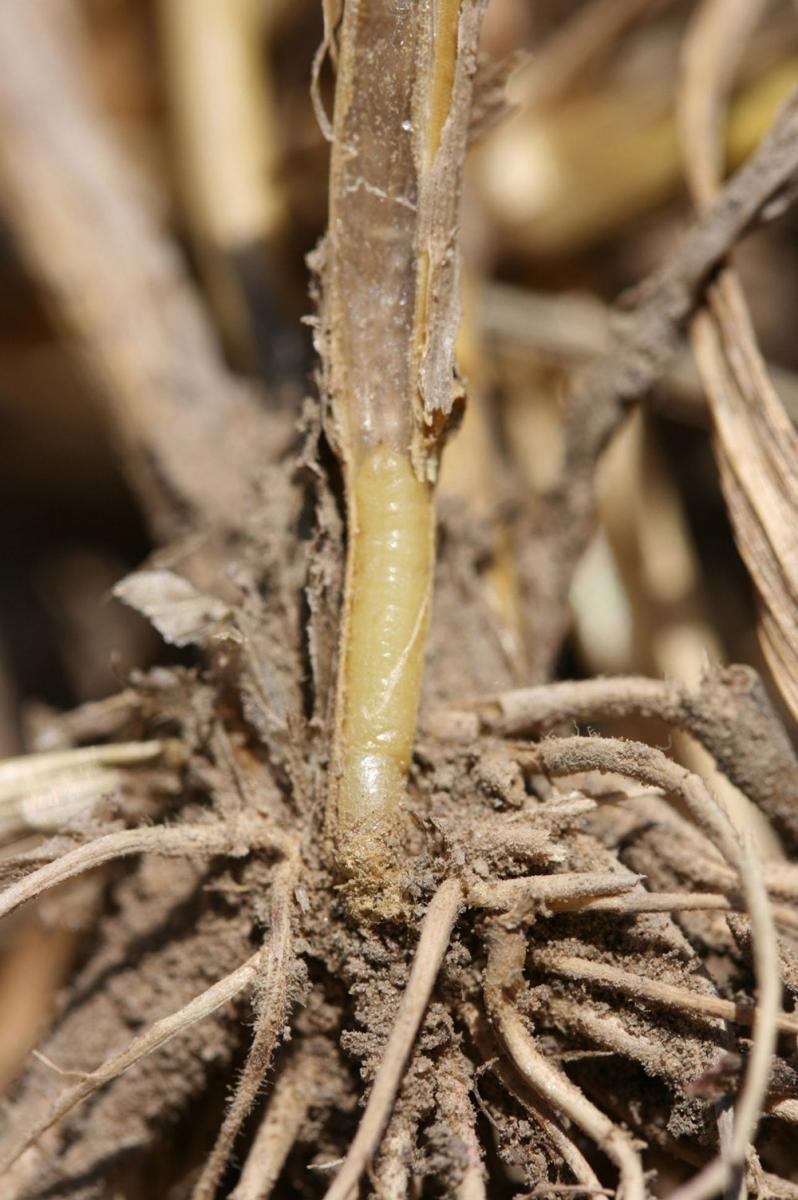
Wheat Stem Sawfly Life Cycle
After winter wheat harvest, sawfly larvae (Figure 3) spend the rest of the summer and winter in the stubs of winter wheat plants (Figure 4). The larvae create a pupil chamber like a clear cellophane enclosure inside the base of the stem (Figure 5). Sometimes when cutting open the stems looking for larvae, you can hear the chamber pop as it bursts. In early spring the larvae pupate and emerge from the cut stub from mid-May to mid-June. The adult sawflies (Figure 6) are not known to feed after emergence.
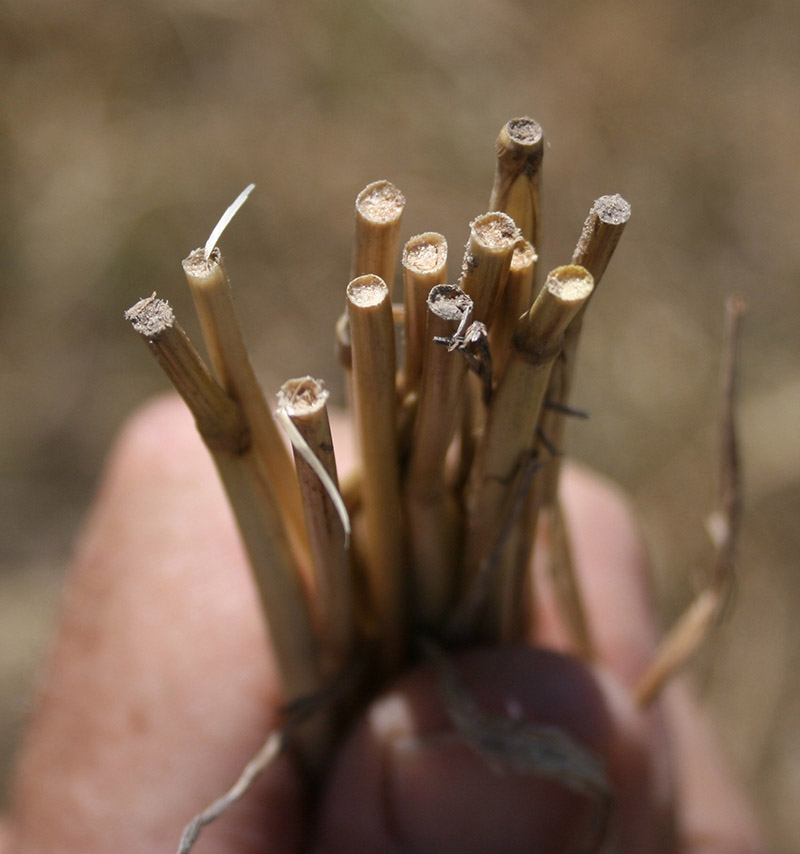
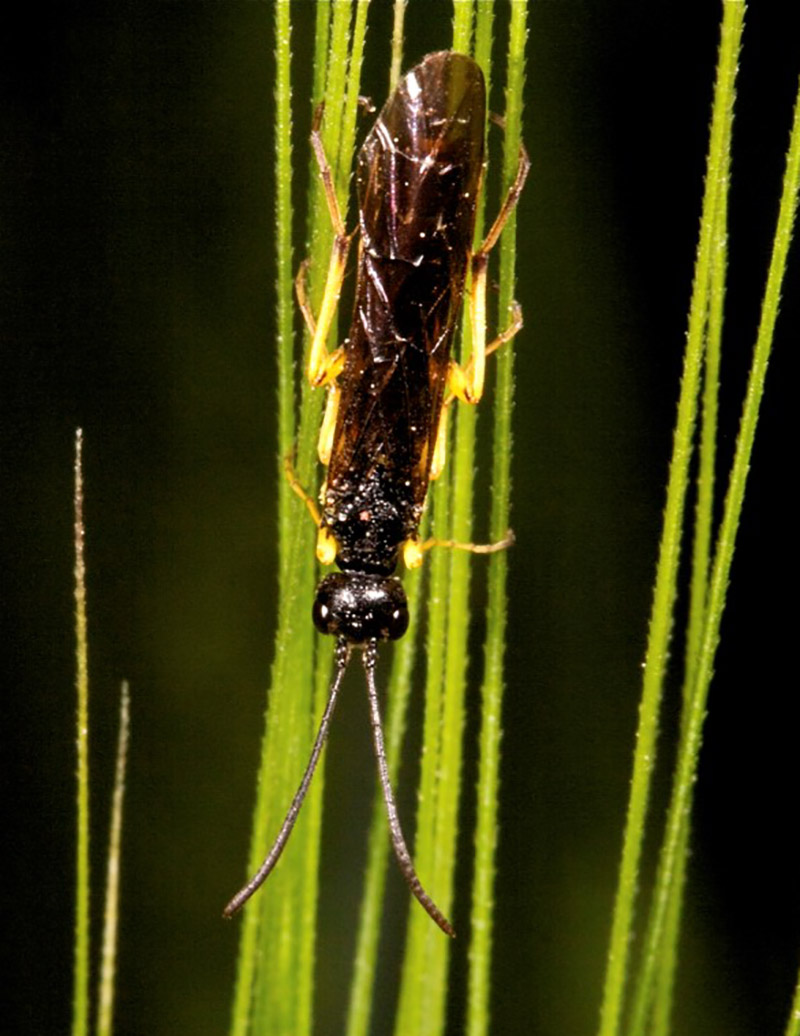
Mating occurs and the female wasps proceed to lay a single egg in the elongating stem of winter wheat. Generally, one egg is deposited by one female per stem; with 30-50 eggs laid in her lifetime. If multiple eggs are laid in the stem (e.g., by different females), the largest sawfly larvae will consume the others such that only one larva remains per stem. This larva travels down the stem tunneling through the nodes until it reaches the base of the stem. As wheat matures, the larva girdles the inside of the stem at the base, weakening it, and plugs the stem with frass. This creates the chamber at the very base of the stem where it remains until the following spring.
During storm or wind events before harvest, the weakened stem often lodges (Figure 7). This lodging is the most significant source of yield loss with the sawfly because combines often cannot recover the lodged wheat.
Wheat yield losses due to sawfly also can occur without lodging. Wheat yield losses of 10-20% have been reported in Montana due to sawfly in the absence of lodging.
John Thomas, Extension Educator
Jeff Bradshaw, Extension Entomology Specialist
Online Master of Science in Agronomy
With a focus on industry applications and research, the online program is designed with maximum flexibility for today's working professionals.


